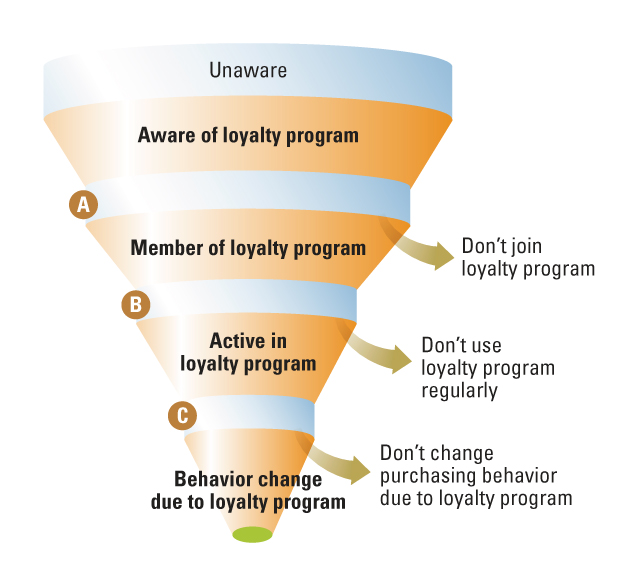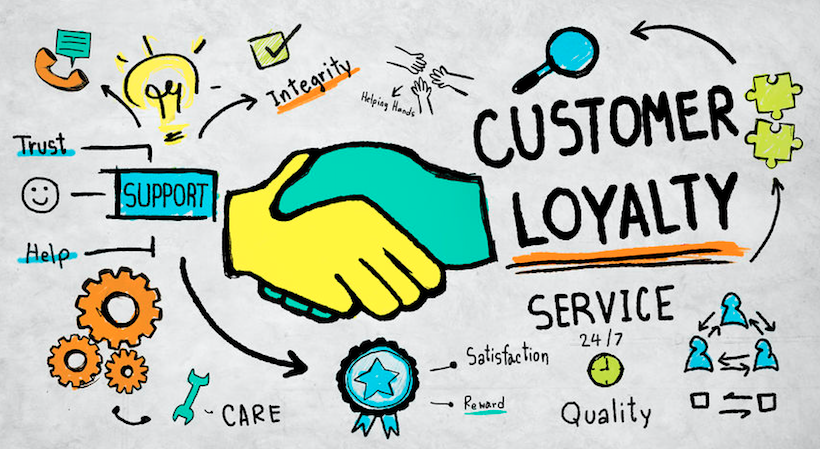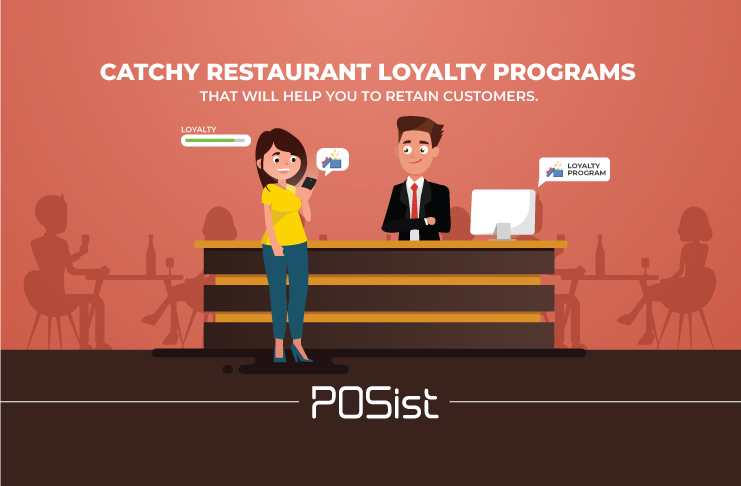All Categories
Featured
Table of Contents
In Lansing, MI, Sarah Ritter and Kassidy Clements Learned About Target Market

What if you could grow your business without increasing your spending? In fact, what if you could really lower your spending but increase your sales, year after year? Would you do it? If you're a company owner, then you'll likely give a resounding 'yes', a simple answer to an even easier concern.
A rewards program tracks and rewards specific costs habits by the customer, offering unique benefits to devoted consumers who continue to shop with a particular brand. The more that the consumer invests in the shop, the more benefits they get. With time, this reward builds faithful consumers out of an existing client base.

Even if you already have a benefit program in place, it's a great idea to dig in and fully comprehend what makes consumer commitment programs work, as well as how to implement one that costs you little cash and time. Don't fret, I'll help you with that. I'll break down the main advantages of a commitment program and the finest methods to produce loyal clients.
Let's dig in. Customer loyalty is when a consumer returns to do business with your brand name over your competitors and is mostly influenced by the positive experiences that the consumer has with your brand name. The more favorable the experience, the more most likely they will return to go shopping with you. Customer commitment is incredibly important to organizations due to the fact that it will help you grow your organization and sales faster than an easy marketing strategy that concentrates on hiring new customers alone.
A few methods to determine customer commitment include:. NPS tools either send out a brand efficiency survey via e-mail or ask consumers for feedback while they are visiting a service's site. This info can then be used to better understand the probability of client commitment. A repurchase ratio determines the ratio of repeat buyers versus one-time buyers.
Client commitment index (CLI). The CLI tracks consumer commitment gradually and resembles an NPS study. However, it takes into account a couple of extra elements on top of NPS like upselling and buying. These metrics are then used to examine brand loyalty. A consumer loyalty program is a marketing strategy that rewards consumers who make purchases and engage with the brand on an ongoing basis.
Client benefits programs are designed to incentivize future purchases. This encourages them to continue working with your brand name. Consumer loyalty programs can be set up in various ways. A popular client loyalty program benefits customers through a points system, which can then be invested in future purchases. Another kind of customer commitment program might reward them with member-exclusive advantages or totally free presents, or it may even reward them by donating cash to a charity that you and your clients are equally passionate about.
In Jamaica Plain, MA, Rory Cordova and Ramon Roy Learned About Current Provider
By using benefits to your consumers for being devoted and helpful, you'll build a rapport with them, deepening their relationship with your brand and ideally making it less likely for them to switch to a competitor. You've likely seen consumer loyalty programs in your own shopping experience, whether at your favorite cafes or your most frequented grocery shops.
But even if everyone is doing it does not imply that's a sufficient factor for you to do it too. The much better you understand the benefits of a customer rewards program, the more clarity you will have as you create one for your own store. You will not be distracted by interesting advantages and complicated commitment points systems.
Remember: work smarter, not harder. Client retention is the primary advantage of a rewards program that works as a foundation to all of the other benefits. As you provide incentives for your existing client base to continue to acquire from your store, you will offer your shop with a consistent flow of money month after month.
By growing your retention rate, you can stop spending as much time or money on increasing your total number of customers. Why is this important? Loyal clients have a higher conversion rate than new consumers, suggesting they are most likely to make a transaction when they visit your shop than a brand-new customer.
By increasing your retention rate by just 5 percent, you can increase your earnings by 25 percent and as much as by 95 percent. Needless to say, your retention rate matters. Secret Takeaway: If you want to significantly increase your earnings, provide incentives for your existing consumers to continue to patronize your shop.
And you won't need to spend money on marketing to get them there. Client acquisition (aka bringing in new customers) takes a great deal of effort and money to convince complete strangers to trust your brand, come to your shop, and attempt your items. In the end, any cash made by this new consumer is overshadowed by all of the money invested on getting them there.
Key Takeaway: If you wish to reduce costs, focus on client retention rather of client acquisition. When you concentrate on offering a positive tailored experience for your existing clients, they will naturally inform their pals and family about your brand name. And with each subsequent transaction, devoted clients will tell much more people per deal.
In Johnson City, TN, Shirley Bond and Gerald Mitchell Learned About Marketing Tips
The best part? Due to the fact that these new clients came from trusted sources, they are most likely to become devoted customers themselves, investing more usually than brand-new consumers brought in by other marketing efforts. The Chase Ultimate Benefits program, for example, offers significant perks for people who take a trip a lot.
The 'ultimate rewards' that Chase cardholders get include 2x points per dollar spent on all travel purchases along with main rental cars and truck insurance coverage, no foreign deal fees, trip cancellation insurance coverage, and purchase protection. For people who travel a lotand have non reusable earnings to do sothere is a massive reward to invest money through the ultimate benefits program.
This whole procedure makes redeeming rewards something worth extoling, which is precisely what numerous cardholders wind up doing. And to help them do it, Chase offers a perk for that too. Key Takeaway: Make it easy for your consumers to brag about you and they will spread the word about your look for totally free.
As soon as you get the essentials down, then using a loyalty rewards app can assist look after the technical details. Here are the steps to get started with developing your customer loyalty program. No customer wishes to purchase products they don't want or require. The exact same opts for your commitment program.
And the only method to tailor a tempting consumer commitment program is by totally understanding your customer base. The best way to do this? By implementing these strategies: Develop client contact info wherever possible. Ensure your organization is constantly developing a detailed contact list that permits you to access existing clients as frequently and as easily as possible.

Track customer behavior. Know what your customers want and when they want it. In doing so, you can anticipate their wants and requires and supply them with a commitment program that will satisfy them. Classify client personal qualities and choices. Take a multi-faceted method, don't limit your commitment program to just one opportunity of success.
Encourage social networks engagement. Frame methods to engage with your customers and target market on social media. They will quickly offer you with very informative feedback on your services and products, allowing you to much better comprehend what they expect from your brand. Once you have actually exercised who your customers are and why they are working with your brand, it's time to choose which type of commitment benefits program will motivate them to stay devoted to you.
In 28625, Macey Wilkinson and Rachael Glenn Learned About Loyal Customers
However, the most common client commitment programs centralize around these primary concepts: The points program. This type of program concentrates on gratifying customers for every purchase they make with points in a point system. These points can then either be utilized on future purchases or put towards some form of benefit.
The paid program. This type of program requires clients to pay a one-time or yearly fee to join your VIP list. Commitment members who come from this list are able to gain access to distinct benefits or member-exclusive advantages. The charity program. This type of program is a little different than the others.
This is achieved by encouraging them to do service with the brand name and, in return, their loyalty will be rewarded with a contribution to a charity. The tier program. This type of program focuses on increasing levels of brand commitment. The more faithful a client is to a brand name, the higher tier they will climb to and the much better the benefits they will receive.
This type of program is just as it sounds, where one brand partners with another brand to supply their cumulative audiences with special member discount rates or offers that they can redeem while working with either brand. The neighborhood program. This type of program incentivizes brand loyalty by supplying its members with access to a similar neighborhood of individuals.
This type of program is relatively similar to paid programs, nevertheless, the subscription fee takes place on a regular basis rather than a one-time payment. Next, select which consumer interactions you 'd like to reward. Base these rewards around which interactions benefit your service one of the most. For instance, to assist your organization out, you can provide action-based benefits like these: Reward customers more when working with your brand name during a slow period of the year or on an infamously slow day of company.
Reward customers for engaging with your brand name on social networks. Incentivize certain items you are attempting to move quickly. Incentivize purchases that are over a particular dollar amount. The concept is to make your client commitment program as simple as possible for your clients to utilize. If your client loyalty program isn't staff friendly, isn't easy to track, is too expensive to run, or isn't simple for your customers to utilize or comprehend, then staff and consumers alike most likely won't benefit from it.
To get rid of these barriers to entry, think about incorporating a consumer commitment software application that will assist you keep on top of all of these aspects of your program. Some quality client program software application consist of:. CandyBar is a digital punch card program. It works by tracking your client's purchases through an app on a computer, phone, or tablet.
In 22405, Areli Mercado and Kassidy Noble Learned About Network Marketing
Commitment members can then examine their rewards via text and company owner can utilize the program to call their clients. Yotpo. Yotpo is a cloud-based consumer loyalty platform exclusively for eCommerce companies. This software application is especially proficient at collecting every type of user-generated material, valuable for tailoring a better client experience.
Loopy Commitment is a handy consumer loyalty software application for companies that primarily use Google Wallet or Apple Pay as their payment platforms. The software application develops a digital commitment card that sends out push alerts to their consumers' phones when they are in close proximity to their physical shop. Once you've taken the time to decide which client commitment techniques you are going to carry out, it's time to start promoting and registering your very first loyalty members.
Use in-store ads, integrate call-to-actions on your website, send promotions via e-mail newsletters, or upload advertising posts on social networks to get your consumers to join. It is essential to understand the primary advantages of a customer rewards program so that you can produce a personalized experience for both you and your consumer.
Think of it. You understand what sort of products your customers like to purchase but do you understand what brings them back, day after day, week after week? What makes them pick your shop over the shop throughout the street? What makes them your client and not the consumer of your most significant competitor? Remarkably, the answers to these concerns do not come down to discount prices or quality items.
Table of Contents
Latest Posts
In Fort Worth, TX, Warren Brewer and Talon Schmidt Learned About Online Sales
In Ladson, SC, Kasey Hooper and Jackson Boone Learned About Target Market
In 21701, Carlee Carney and Amiya Davis Learned About Potential Clients
More
Latest Posts
In Fort Worth, TX, Warren Brewer and Talon Schmidt Learned About Online Sales
In Ladson, SC, Kasey Hooper and Jackson Boone Learned About Target Market
In 21701, Carlee Carney and Amiya Davis Learned About Potential Clients